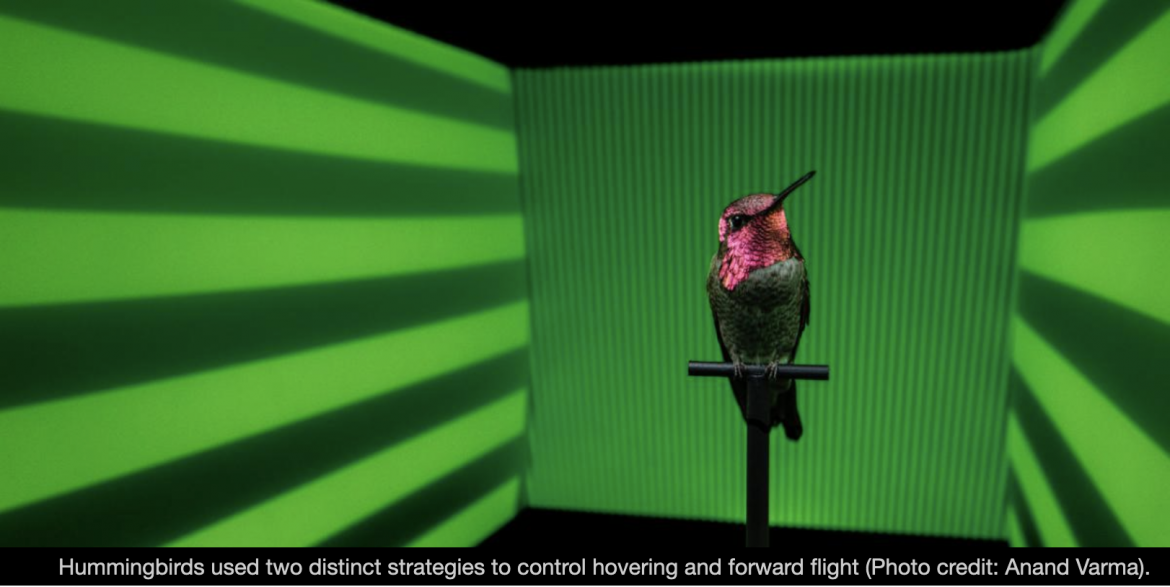
Image: Hummingbirds used two distinct strategies to control hovering and forward flight (Photo credit: Anand Varma).
Press:
UBC Science, January 10, 2024 - Need for speed: how hummingbirds switch mental gears in flight
__________________________________________________
Abstract
The detection of optic flow is important for generating optomotor responses to mediate retinal image stabilization, and it can also be used during ongoing locomotion for centring and velocity control. Previous work in hummingbirds has separately examined the roles of optic flow during hovering and when centring through a narrow passage during forward flight. To develop a hypothesis for the visual control of forward flight velocity, we examined the behaviour of hummingbirds in a flight tunnel where optic flow could be systematically manipulated. In all treatments, the animals exhibited periods of forward flight interspersed with bouts of spontaneous hovering. Hummingbirds flew fastest when they had a reliable signal of optic flow. All optic flow manipulations caused slower flight, suggesting that hummingbirds had an expected optic flow magnitude that was disrupted. In addition, upward and downward optic flow drove optomotor responses for maintaining altitude during forward flight. When hummingbirds made voluntary transitions to hovering, optomotor responses were observed to all directions. Collectively, these results are consistent with hummingbirds controlling flight speed via mechanisms that use an internal forward model to predict expected optic flow whereas flight altitude and hovering position are controlled more directly by sensory feedback from the environment.